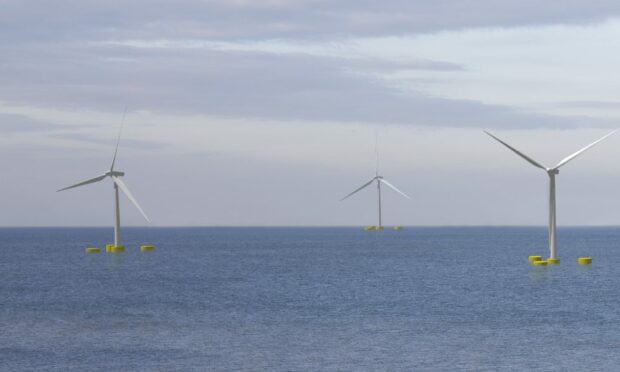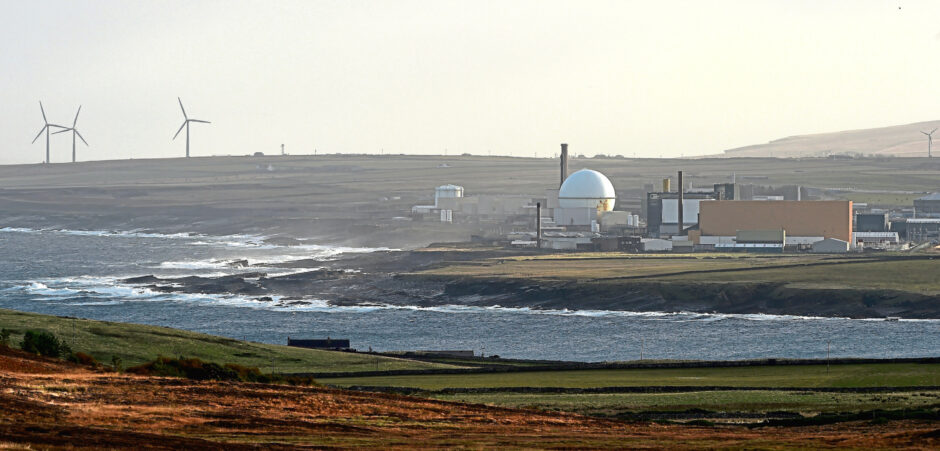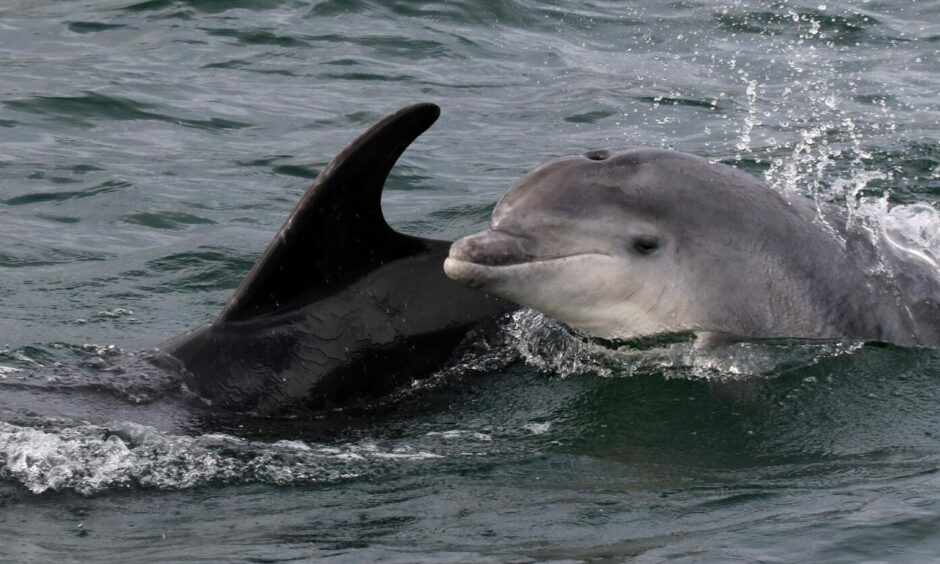Highland’s north planning committee will next week consider whether to raise an objection to the proposed floating wind farm off the Caithness coast.
Pentland offshore floating wind farm will comprise up to seven turbines and substructure, some 9km north west of Dounreay.
Marine Scotland is consulting Highland Council under section 36 of the Electricity Act.
Highland Council’s planning report runs to 42 pages, with an environmental impact assessment outlining the ‘worst case scenario’ for the development.
The council acknowledge that there are ‘significant adverse impacts’ on land and sea.
Caithness west community council has objected to the plans on the basis that they leave the village of Reay ‘encircled’ by wind farms.
Several consultees have also raised concerns about the impact on local birdlife, including NatureScot and the RSPB.
Meanwhile, Sepa has objected on the grounds of the possible distribution of radioactive particles.
However, taking all factors into account, council planners say that much of the environmental impact can be mitigated. They say Pentland offshore wind farm could deliver a £48 million economic boost to Caithness.
As such, planners have asked the committee to raise no objection to the proposal.
Extensive offshore wind farm
Highland Wind Limited is looking to build up to seven floating turbines up to 300 metres tall. These will be supported by seven floating substructures housing mooring lines, anchors and cabling.
The array area sits 7.5km offshore, plus an export cable corridor to Means High Water Springs. In this development there will be no substation platform offshore.
Instead, Highland Wind plans to build the substation onshore, near HMS Vulcan and Dounreay.
If Marine Scotland grants consent, construction is likely to begin in 2024, with the Pentland offshore wind farm up and running towards the end of 2026.
Across its 30-year lifespan, the council report estimates £48 million in gross value added to the Caithness economy.
Highland Wind has also signed a memorandum of understanding with Scrabster Harbour for construction, operations and maintenance support.
Concerns for marine and birdlife
However, the benefits to the renewables industry and local economy have to be balanced against the local impacts of the wind farm.
The project area is home to a rich variety of marine life. Highland Wind has identified kelp beds, skate, ocean quahog, ling, plaice, octocorallia, sand eel and herring. Other less common wildlife includes dolphins, killer whales and harbour porpoise.
Local birdlife includes the black legged kittiwake, great black headed gull, great skua, herring gull, red-throated diver, petrel, sheerwaters, wildfowl and waders.
NatureScot has not objected to the application. However, both NatureScot and the RSPB have asked for more information about how the applicant will assess the risks of birds colliding with the turbines.
Fears wind farms leave Reay ‘encircled’
Caithness west community council raised concerns about the impact on sea birds, north Caithness cliffs special protection area and the Sandside Bay SSSI.
They also believe the wind farm will have a detrimental effect on local wildlands, especially East Halladale flows.
The village of Reay already has wind farms to the south and east, and this application adds another to the north. The community council says this will leave locals feeling ‘encircled’.
However, council planners say the village itself provides enough screening from the developments.
Highland Council has concluded that Pentland offshore wind farm can overcome many of these concerns by working closely with national environment bodies.
It highlights the positive environmental and economic benefit to Caithness, Highland and Scotland. As such, officers have recommended that members do not object to the Scottish Government.
North planning committee will meet on Tuesday 6 December to consider the application.
Are you interested in more exclusive and breaking Highland and Islands news from the P&J? If so, why not join our dedicated Facebook page HERE




Conversation